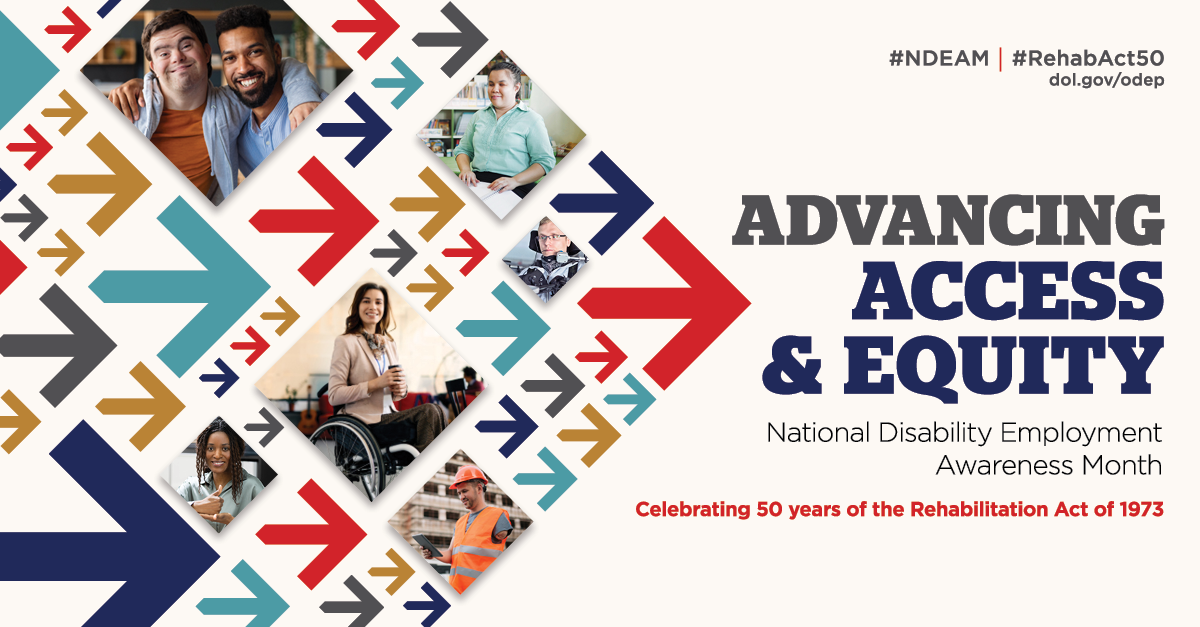What is National Disability Employment Awareness Month all about? According to the Library of Congress, “in October, Americans observe National Disability Employment Awareness Month by paying tribute to the accomplishments of the men and women with disabilities whose work helps keep the nation’s economy strong and by reaffirming their commitment to ensure equal opportunity for all citizens.” Today we will shed light on why disability employment awareness matters.
Origins of Disability Employment Awareness
In 1945, as injured service members returned from World War II, the government made it a priority to educate the public about disabilities and employment. It was important for employees to be able to work, or continue to work, with their disability. Currently, as disability rates increase, it is more important than ever to spread awareness and education on this matter to improve disability employment statistics, education, and access to accommodations.
Statistics
The U.S. Bureau of Labor Statistics found that 8 out of 10 individuals with disabilities were not in the workforce in 2020, as compared to 3 out of 10 individuals without disabilities. The unemployment rate is twice as high for individuals with disabilities, versus those without. Research indicates that workplace hiring disparities will continue to increase, and there are many barriers contributing to these hiring statistics.
Common Barriers
Workplace barriers vary from person to person. Some of the most common barriers that individuals with disabilities are facing include:
- Biases in the hiring process
- Fear of negative judgment and repercussions
- Lack of accessibility in workplaces
- Unwillingness to provide reasonable accommodations
With education and tools, areas of question and concern can be addressed for employer and employee, which can minimize the impact of workplace barriers.
Accommodations
Workplace accommodations often feel like uncharted territory for employers. Uncertainty of what might be needed, how to navigate the process, associated costs, and more, may leave employers hesitant about how to proceed. With basic education and resources, reasonable accommodations can be put into place, and the costs are usually less than expected. Disability accommodations come in many forms, and the resources and tools are out there to learn and implement.
Benefits
This study found “if the right people with disabilities are selected for the right job and are given responsibility, they often outperform other employees, with higher levels of efficiency, productivity, accurateness, commitment, loyalty, and satisfaction. This, in turn, increases the company’s profitability and overall shareholder value.” Some companies go out of their way to hire individuals with disabilities because they have found great success (read Neurodiversity as a Competitive Advantage). Harvard Business Review details reasons why to hire individuals with disabilities, resulting in benefits for employee and employer.
Organizations and Resources
Job Accommodation Network (JAN) is an useful tool for employers and employees to utilize in their search for accommodations and navigating the process of implementation, and much more.
The U.S. Department of Labor initiative National Disability Employment Awareness Month (NDEAM), offers tools to raise disability awareness in the workplace.
Vocational Rehabilitation Agencies assist with job placement services and accommodations.
With some preparation and patience, finding gainful employment is possible for individuals with disabilities, and can be rewarding for all. Research and Education for Autistic Children’s Treatment is here to support individuals with disabilities. Have a suggestion or idea? We would love to hear from you!
Brought to you by R.E.A.C.T. for Hope





